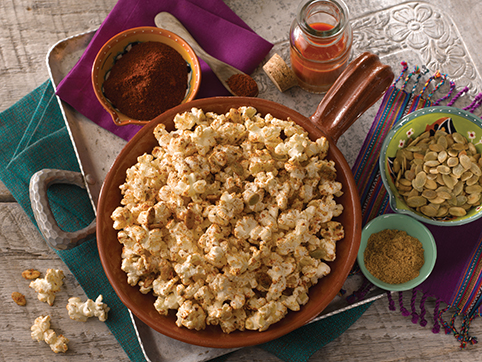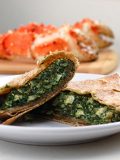 Snacks can be the downfall to any diet but popcorn can be the light and healthy alternative to crackers and chips. Who can resist popcorn at a movie theater. Just hold the buckets of butter and you will have a healthy snack. Popcorn is not new to the food scene. What is new is the variety of toppings and flavors being created today from garden fresh herbs to the hot, spicy flavors riding the wave of the hot pepper trend.
Snacks can be the downfall to any diet but popcorn can be the light and healthy alternative to crackers and chips. Who can resist popcorn at a movie theater. Just hold the buckets of butter and you will have a healthy snack. Popcorn is not new to the food scene. What is new is the variety of toppings and flavors being created today from garden fresh herbs to the hot, spicy flavors riding the wave of the hot pepper trend.
America: birthplace of popcorn
America can claim to be the birthplace of popcorn. It was discovered here thousands of years ago and has been loved by people ever since. Through the ages, popcorn has remained relatively unchanged. Popcorn is a seed which just happens to do some nifty things when heated.
The Popcorn Board (yes, there is one!) tells us that the early Native Americans believed a spirit lived inside each kernel of popcorn. When heated, the spirit grew angry, burst out of its home, and fled into the air as a disgruntled puff of steam. A less charming but more scientific explanation exists for why popcorn pops.
Popcorn for breakfast
In the late 19th century and early 20th century, popcorn was enjoyed for breakfast like cereal is today. In fact, it very well may have been the forerunner to corn flakes.
Popcorn is nutritious snack
Popcorn is a whole grain. It is made up of three components: the germ, endosperm, and pericarp (also known as hull). Of the 4 most common types of corn—sweet, dent, flint, and popcorn—only popcorn pops. Popcorn differs from other types of corn in that its hull has just the right thickness to allow it to (eventually) burst open.
At the heart of this endearing little kernel is a healthful whole-grain, naturally low in fat and calories, gluten-free, and non-GMO.
Take a look at the nutrition facts
- Air-popped popcorn has only 30 calories per cup; oil-popped popcorn has only 35 calories per cup.
- When lightly buttered, popcorn contains about 80 calories per cup.
- Popcorn is a whole grain, making it a good-for-you food.
- Popcorn provides energy-producing complex carbohydrates
- Popcorn contains fiber, providing roughage the body needs in the daily diet.
- Popcorn is naturally low in fat and calories.
- Popcorn has no artificial additives or preservatives, and is sugar-free.
- Popcorn is ideal for between meal snacking since it satisfies and doesn’t spoil the appetite.
- 3 cups of popcorn equal one serving from the grain group.
Like hot stuff?
Try either of these two recipes shared by the Popcorn Board if you like your snacks spicy.
Elote (Mexican Street Corn) Popcorn
10 cups popped popcorn
1 tablespoon butter or margarine
2 tablespoons hot sauce (such as Frank’s)
1 tablespoon dried cilantro
½ cup Queso Fresco cheese, crumbled (can substitute shredded Monterey jack cheese)
Place popcorn in a large bowl. In a small saucepan, melt butter. Add hot sauce and cilantro; mix well. Pour over popcorn, stirring to coat.
Sprinkle with cheese; mix well.
 Sriracha Lime Popcorn
Sriracha Lime Popcorn
Yield: About 12 cups
3 quarts popped popcorn
1/2 teaspoon minced lime zest
2 tablespoons butter or margarine, melted
1 tablespoon hot chili sriracha sauce
2 teaspoons fresh lime juice
1/4 teaspoon salt
Place popcorn in a large bowl. Sprinkle popcorn with lime zest.
Mix butter, sriracha sauce and lime juice. Drizzle over popcorn and toss. Sprinkle with salt; toss again and serve immediately.













